Choosing a camera for astrophotography is a big decision that takes lots of thought and decisions to make. What is your budget? What telescope would you be mating the camera to? These are some of the questions you will have to ask yourself before finding the perfect camera. This segment will help provide guidance for making a decision on which of the best astrophotography cameras to buy.
The Top Cameras for Astrophotography
DSLRs vs Cooled OSCs
For beginner astrophotographers on a budget, we recommend DSLRs, specifically from Canon and Nikon. However, the Canon models have some glaring issues that put Nikon ahead of Canon for astrophotography. The most important difference is that Nikon cameras typically use much more sensitive Sony sensors for their cameras.
We would have recommended Sony DSLRs due to the incredibly low noise sensors as well, but they have a feature gone rogue dubbed “Star Eater” in their software. Star Eater is the result of a heavy-handed noise reduction algorithm in the software of the camera that can mistake faint stars as noise and completely remove them. Nikon’s cameras, thankfully, do not have this issue.
At about $500, we are able to start venturing into purpose-built cameras with two-stage TEC cooling that reduces noise by orders of magnitude. These cameras are commonly called “Cooled OSC” cameras, with “OSC” meaning One-Shot Color. Two-stage TEC cooling allows for cooling to winter temperatures during the sweltering heat of summer, which greatly reduces noise. TEC stands for thermoelectric cooling. TEC-cooled cameras use a number of thermal effects to cool a surface.
These Cooled OSC cameras also typically use the already low-noise sensors used in some of the DSLRs we recommend to reduce noise even further. The biggest disadvantage of OSC cameras is that a laptop computer is mandatory to control the entire process, whereas with a DSLR, you can get by with just an intervalometer. The laptop requirement and the TEC cooling also mean your rig will consume more electrical power than a DSLR-based one.
Our Top DSLR Recommendations For Astrophotography:
Best Astrophotography Cameras 2025 – Reviewed
1. Nikon D5300: Lowest Price, Choice Under $500
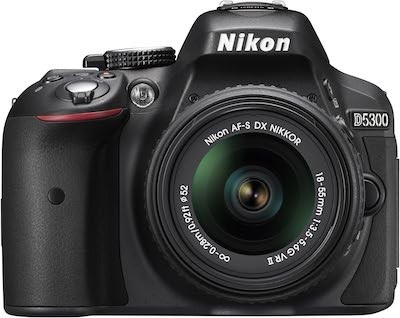
In the Nikon camp, we recommend two DSLRs. Those models are the D5100 and D5300.
I have personally owned both of these DSLRs and can tell you they are a great way to start astrophotography. The D5300 has 3.8 micron pixels, which is best for medium-to-short focal length telescopes.
These cameras have ultra-low-noise Sony sensors that are suitable for long-exposure imaging. The Nikon D5300 and other select models have the advantage of having the low-noise Sony sensors found in the Sony line of DSLRs while lacking the aggressive star eater noise reduction that Sony has baked into their firmware.
2. Nikon D5100: Choice Between $500-$600
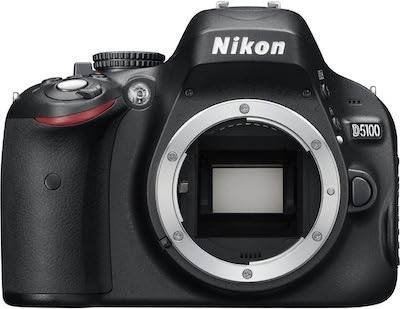
The D5100 offers all the great features of the D5300 but with larger 4.8 micron pixels—ideal for longer focal length telescopes than the D5300 can handle.
Otherwise, the two cameras are rather similar; like the D5300, the Nikon D5100 has an ultra-low-noise Sony sensor and mostly identical specs.
3. ZWO ASI183MC Pro – Choice Between $600-$900
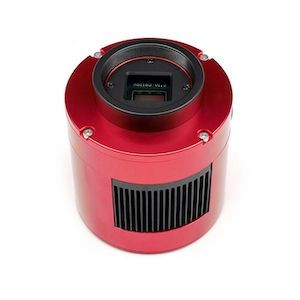
We recommend this camera only to astrophotographers with shorter focal length systems; this camera has very small pixels at 2.4 microns. Such small pixels make the image scale very small at even medium focal lengths. At 500mm, you are already under 1”/px.
This camera has a very high QE (Quantum Efficiency) of 84%, which makes for a higher SNR. Quantum efficiency is the rating of how many photons that hit the sensor are actually detected. For the 183, the QE is at 84%, meaning that for every 100 photons that hit the sensor, 84 get recorded.
A downside is that this camera has a small sensor at only 1 inch diagonal.
4. ZWO ASI294MC Pro – Choice Above $900
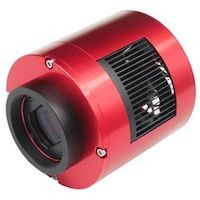
We recommend this camera only to astrophotographers with longer focal length systems; the image scale with this camera stays above 1”/px until you hit 950mm of focal length!
The pixels are much larger than the ASI183MC Pro at 4.6 microns. The ASI294MC Pro also boasts an extremely low read noise (noise generated by the camera system) of only 1.2e, which allows for short-exposure imaging if your tracking isn’t very good. It also allows for a method of imaging called lucky imaging, where you take hundreds of short exposures of an object at a high focal length, hoping for atmospheric seeing to be good for a second or two and get great detail out of small, relatively faint astronomical objects.
Canon T6i – Honorable Mention
If you must have a Canon, we recommend the Canon T6i. The T6i has a medium pixel size of 3.7 microns, which helps beginners who may not have the best tracking and polar alignment accuracy. The T6i also has a sensitive and low-noise sensor compared to other Canon models. However, it is not quite as good as the Nikons.
If you have a camera identical to or similar to one of the ones already mentioned (most of the Canon Rebel Ti series cameras, for instance, are pretty similar), you’re all set. As with any DSLR, all you need is a T-ring and T-adapter to connect your DSLR to your telescope, an intervalometer, or PC control cable, and you’re set.
Matching a camera to a telescope
Matching the correct camera to the correct telescope is an important part of astrophotography, and matching incorrectly can make the already difficult learning curve seem more like a cliff. There are two major considerations you need to make when choosing a camera: pixel size and sensor size. Pixel size, along with the focal length of the telescope, determines how large one pixel is relative to the sky, also known as image scale.
Using one of my most used astrophotography telescopes as an example, my telescope has 460mm of focal length, and my camera pixel size is 3.8 microns. Using the formula below, I calculated that my image scale is 1.71 arcseconds per pixel, or 1.71”/px. You can calculate your image scale using the formula below.
(Pixel Size / Telescope Focal Length) x 206.265 = Image Scale

Image scale is important because the smaller it is, the harder it will be to track your telescope accurately, and more effort will be needed to get your autoguiding perfect.
Now, using the formula stated above, practice using the image scale to match a camera to a telescope. Calculating image scale requires knowing two figures, which are provided by telescope and camera resellers. You have to know the focal length and pixel size of your camera and telescope. In the example below, there are two telescopes: an Orion 6” F4 Newtonian Astrograph and an Orion 10″ F3.9 Newtonian Astrograph. There are also two cameras: a ZWO ASI1600MM Pro and a Nikon D5100. Using the formula above, we can calculate the image scales for the combinations of cameras and telescopes.
| ZWO ASI1600MM Pro | Nikon D5100 | |
|---|---|---|
| Orion 10" F3.9 Newtonian Astrograph | 0.78”/px | 0.99”/px |
| Orion 6” F4 Newtonian Astrograph | 1.65”/px | 1.31”/px |
The table above lists the image scales using all the possible combinations of cameras and telescopes in this example. From experience, I would not recommend a pixel size of any less than 1”/px to any beginner. Why do you ask? There are many reasons why I say this. The most important reason is tracking accuracy. The smaller your pixels, the better your tracking, polar alignment, and guiding will need to be. Another reason would be that this limit helps to prevent you from getting a telescope too big for your mount. Larger scopes typically make the image scale smaller due to the increase in focal length.
The second factor to consider is the sensor size. This mainly breaks down to what you want to image. If you’d like to image large, expansive nebulae and star clusters, you will probably want to match a camera with a large sensor size to a telescope with a focal length in the 400–600 mm range. On the other hand, if you want to image galaxies and planetary nebulae, you should consider getting a longer focal length telescope (600–1000mm) and a camera with a medium-sized sensor.
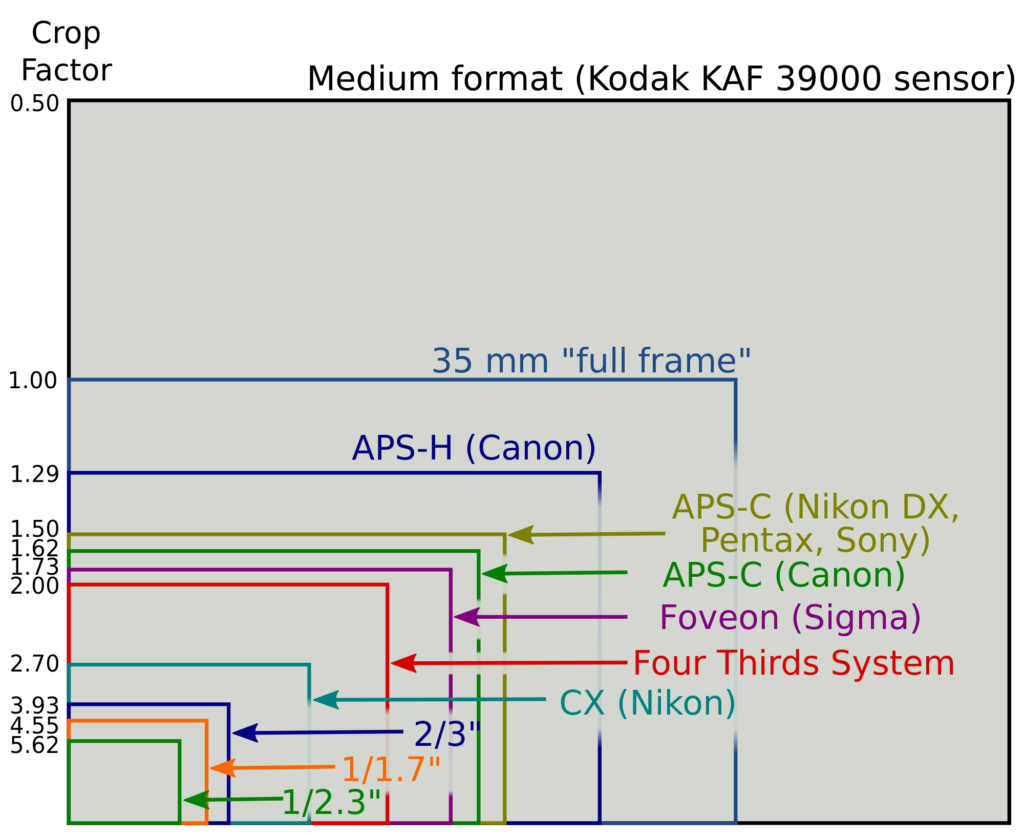

Hello,
My name is Don and I’m super interested in astrophotography.
I currently have a 8″ dob telescope. I know that not having a tracking system it’s going to be hard for actually tracking and deep space imaging..
I’m looking for what would be best so when I do get a tracking system. I’m currently in contact with B&H and OPT Optics about them installing a tracking system on it… Now, I’m looking for the camera.
I’ve seen a formula that would help with the situation but I’m still slightly confused.
Pixel size/focal length x 206.625…
When it says pixel size, is it taking about the camera in trying to purchase?
Like, if I decided to buy a Nikon the pixel size of that Nikon. Or if I decided to buy a cannon it would be the pixel size of that Cannon?
I know my focal length is 1200 mm.. I’m only missing one part of the equation which I’m confused on how to get.
Any information would be greatly appreciated.
Thank you
Don Hawkins